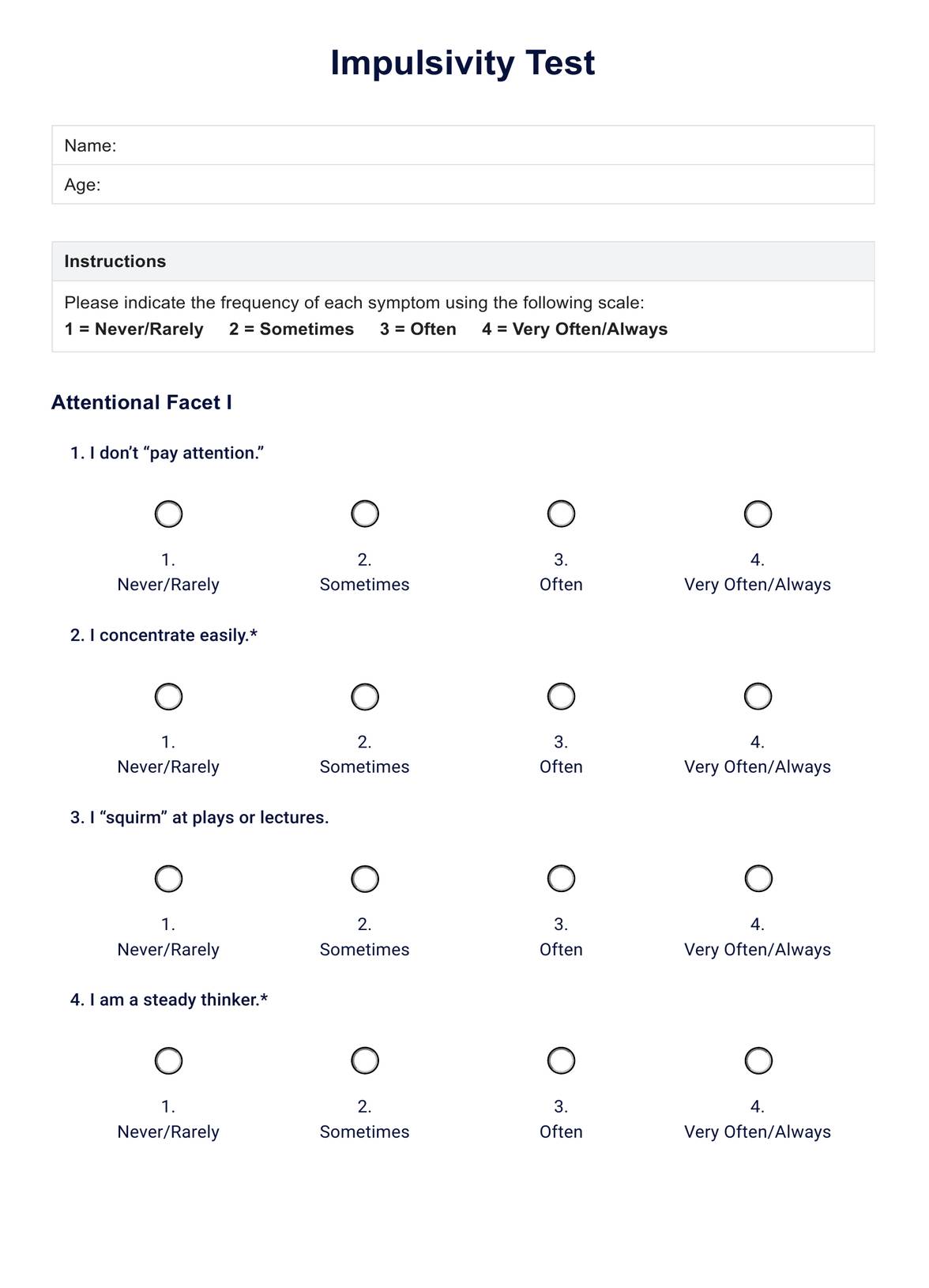The test for impulsivity often involves structured assessments like the Barratt Impulsiveness Scale, which measures various aspects of impulsivity through a series of questions. Patients rate the frequency of impulsive behaviors, helping clinicians gauge impulsivity levels.

Impulsivity Test
Read our comprehensive guide on impulsivity for valuable insights, and download our effective Impulsivity Test template here for your practical use.
Impulsivity Test Template
Commonly asked questions
Three common symptoms of impulse control disorder include frequent engagement in behaviors that have the potential for self-harm or harm to others, an increasing sense of tension or arousal before committing the act, and feeling relief or gratification after the act.
The four types of impulsivity include cognitive impulsivity (making rash decisions often leading to commission errors), motor impulsivity (acting without thinking), non-planning impulsivity (lack of forethought), and impulsive aggression (reactive, often violent behaviors).
EHR and practice management software
Get started for free
*No credit card required
Free
$0/usd
Unlimited clients
Telehealth
1GB of storage
Client portal text
Automated billing and online payments











